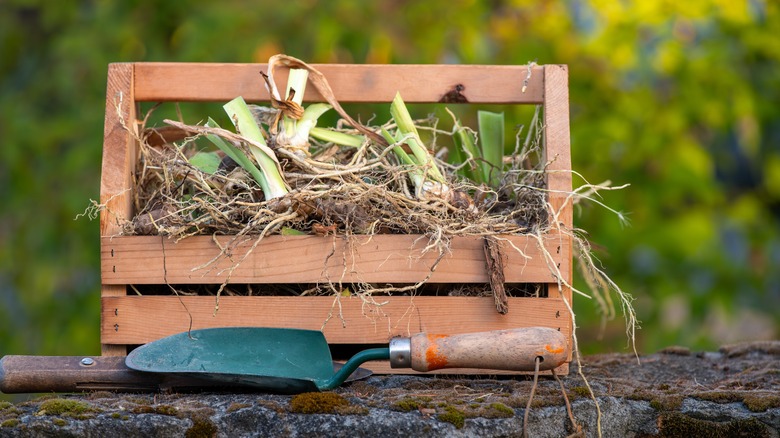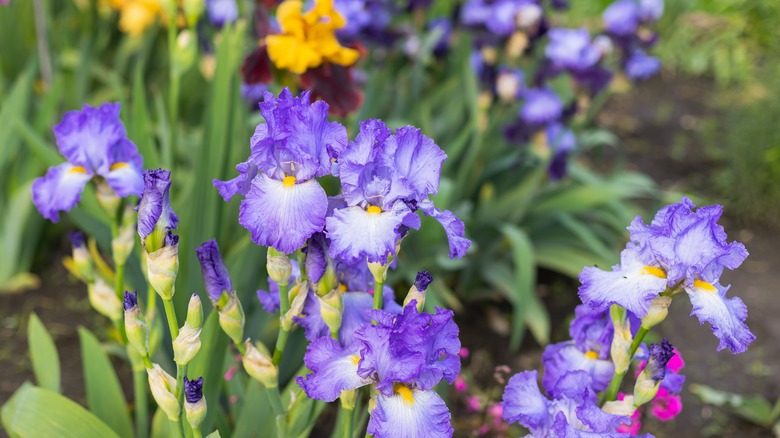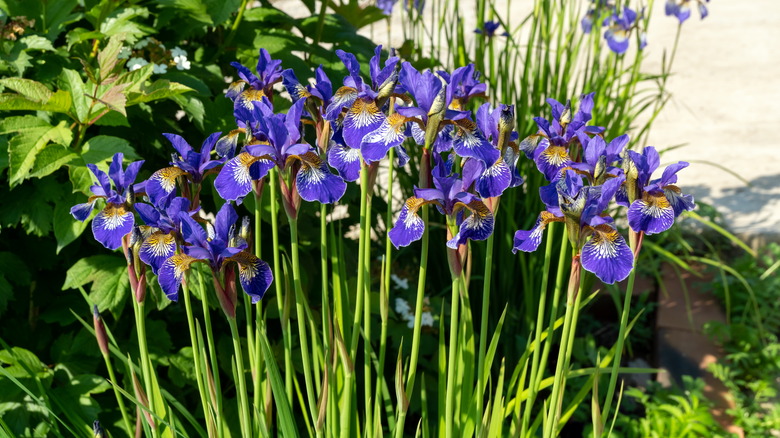The Best Time To Divide & Replant Irises, According To Our Professional Gardener
Irises are a fairly easy-to-care spring-blooming perennial that offer gorgeous, colorful blooms throughout the season, depending on their variety. Though they're not too fussy about soil, all irises benefit from dividing every three or five years. The best time to divide irises is in mid to late summer or fall, when the a clump of irises appear to be overgrown. Some irises have different structures and growth habits. Reticulated irises and Dutch irises grow from bulbs, and form clumps. German (bearded) iris are the most commonly-grown irises, and grow from a fleshy rhizome. The "beardless" irises include Japanese, Louisiana, and Siberian irises which grow from rhizomes, but these rhizomes are quite different in appearance from their German cousins.
Dividing and replanting your irises helps them bloom at their best. You can replant them in their same spot, and also choose new spots for extra rhizomes that have formed. When choosing a new location for your divided irises, be sure to give them plenty of room for the rhizomes or bulb clumps to increase, as they tend to double in size every year. Choose a spot where they will get plenty of sun. I have had many bearded irises bloom just fine with partial sun, too. Bearded irises don't tend to like wet soil, so make sure the spot also has good drainage. Once you've chosen a location, you're ready to divide and replant.
How to divide your bearded irises in fall
Among the many types of irises available for garden planting, German irises, commonly called bearded irises, are known as the most colorful and dramatic. They grow from large rhizomes, and come in virtually hundreds of varieties. Bearded irises are fairly straightforward to grow and care for, and don't need much maintenance, but dividing them every two or three years is recommended, for them to thrive their best. Replant them where they have space, and avoid putting them next to hard edges where the rhizomes can't spread easily.
Some bearded irises rebloom in late summer to early autumn. Some of my favorite rebloomers are 'Immortality', 'Champagne Elegance', and 'Victoria Falls'. For reblooming varieties of bearded iris, you will want to wait until the flowers have dropped off completely, which in some cases might be as late as mid-October. But varieties that don't re-bloom late in the season can be divided in September, which is when many other spring-flowering perennials can also be divided. Dig up your bearded iris clumps. Some of the rhizomes may be intertwined with each other. Using pruning shears or a garden knife, cut any spongy parts off the rhizomes, or any not bearing roots. You can trim the leaves at this time, also; leaving about 2 or 3 inches of green leaves is recommended. Irises should regrow from even a small portion of healthy rhizome. Plant them with a bit of the rhizome exposed, and avoid using heavy mulch on bearded irises.
Dividing other kinds of irises
Siberian, Japanese, and Louisiana irises form thinner rhizomes than bearded irises, and these tend to clump together in a sort of root system. It's good to not let these root clumps get too big, as they can become somewhat unwieldy to divide. Dividing every other year in the fall is recommended. These irises can be divided in fall when dormant, and can also be divided in early spring just as new growth is appearing.
Dig up the entire clump, shake off excess soil, and use a flat shovel or garden knife to carefully cut through the clump to divide it. Then replant them as desired. These irises can handle a somewhat damper soil environment than bearded iris, but still need good drainage. The rhizomes should be planted about 2 inches beneath the soil surface. If your beardless irises show a tendency to spread quickly and take over your garden, plant them in smaller clumps and divide as needed. To divide bulb irises like Dutch iris or reticulated dwarf irises, the process is similar to beardless irises. Simply dig up the bulb clump in autumn once the leaves have started to fade. These bulbs should pull apart fairly easily so that you can separate and replant the bulbs. If the clump is very dense or tight, you can use a pruning saw or knife to cut through it if needed. You can plant several bulbs together in one spot, or separate them and plant single bulbs.


